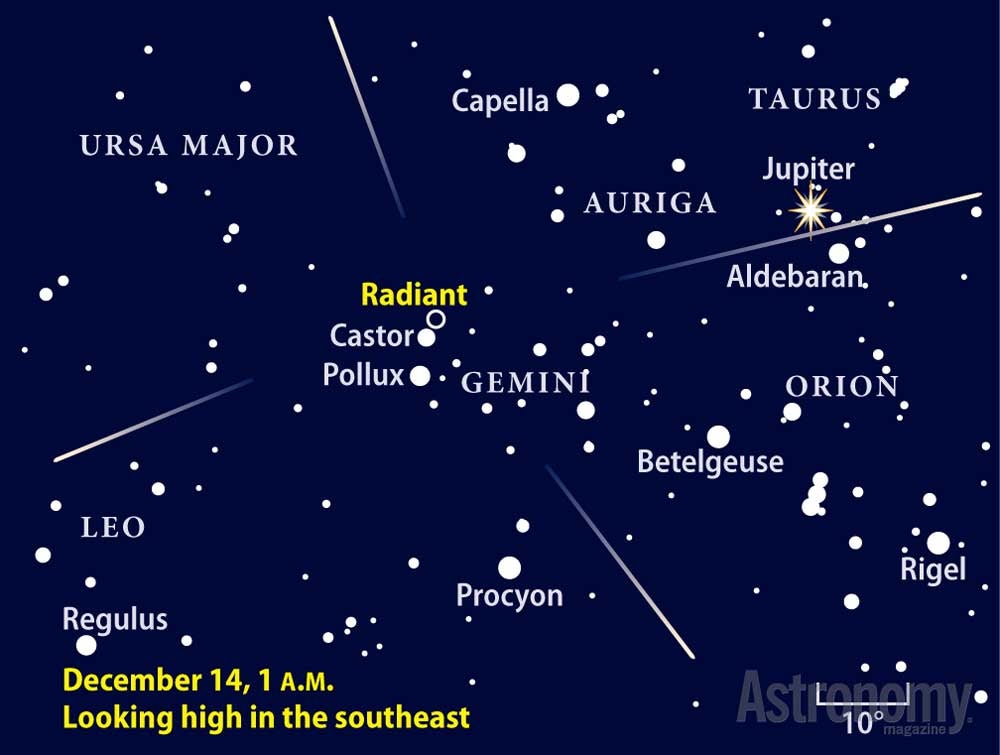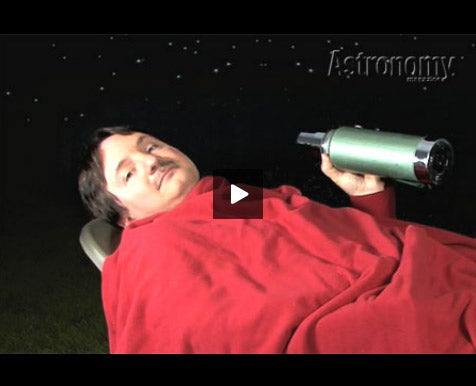Unfortunately, conditions won’t be ideal this year. According to Astronomy magazine Senior Editor Michael E. Bakich, “An 85-percent-lit Moon will share the sky with this meteor shower until close to dawn. The bright moonlight will drown out some faint meteors and render the bright ones a little less impressive.”
Still, observers will have a narrow window with dark skies. At mid-northern latitudes, the Moon sets around 4 a.m. local daylight time and morning twilight doesn’t begin until a half-hour later. Skygazers can open that window wider by finding a spot where a building, tree, or low hill blocks the Moon from view and darkens the sky. Also try to observe from a rural location, where the lights of the city won’t add to our satellite’s glow.
Lyrid meteors begin as tiny specks of dust that hit Earth’s atmosphere at high speeds, vaporizing from friction with the air and leaving behind streaks of light. The meteors appear to radiate from the constellation Lyra the Harp, near the bright star Vega, which rises in late evening and passes nearly overhead shortly before dawn.
With the Moon hanging low in the west before 4 a.m., your best bet for seeing meteors is to scan the eastern sky. Once the Moon sets, look about two-thirds of the way from the horizon to the zenith (the point directly overhead) in any direction. Don’t get tunnel vision. If you let your eyes wander, peripheral vision can pick up meteors you otherwise might not see. Another no-no — don’t stare directly at the radiant. Although you can trace all of a shower’s meteors back to Lyra, any meteor you see there will be just a point of light. All other things being equal, the farther away from the radiant a meteor streaks, the longer its trail will be.
April mornings can be chilly and you won’t be active, so bring along warm clothes and a blanket. Have some hot coffee, tea, or soup to ward off the chill. And plan to recline in a lawn chair or lie down on an air mattress — sitting up straight or standing for long periods will wear you down.
- The dust particles that create Lyrid meteors strike Earth’s atmosphere at 109,600 mph (176,400 km/h). Although this sounds fast, it actually is slower than the speeds of many other annual showers. The Leonids of November top the charts, hitting our atmosphere at 158,800 mph (255,600 km/h).
- The Lyrid dust particles were born in an obscure comet known as C/1861 G1 (Thatcher). This object orbits the Sun once every 415 years, the longest period of any meteor-producing comet.
- Although most shower meteors meet their demise in Earth’s atmosphere at altitudes between 50 and 70 miles (85 and 115 kilometers), a few bigger particles survive to within 12 miles (20km) of the surface. These typically produce “fireballs” that glow as bright as or brighter than Venus.
- Video: How to observe meteor showers, with Michael E. Bakich, senior editor
- Video: Easy-to-find objects in the 2013 spring sky, with Michael E. Bakich, senior editor
- StarDome: Locate the shower’s radiant in Lyra in your night sky with our interactive star chart.
- The Sky this Week: Get your Lyrid meteor shower info from a daily digest of celestial events coming soon to a sky near you.
- Sign up for our free weekly e-mail newsletter.












